Here at Boulder Valley Dental Center, we are committed to providing you with individual, high-quality dental care that will improve your oral health, smile and overall wellbeing. After you receive treatment, our dentist and team will provide you with detailed instructions to maximize your treatment benefits and help you return to normal life as soon as possible.
Aftercare Guidelines For Your Dental Procedure
These instructions include:

Clear Aligners Post-Op Instructions
Wearing Your AlignersClear aligner compliance is key to achieving the best results. Clear aligners only work to predictably move your teeth if you are consistently wearing them. We recommend you wear your aligners 20-22 hours, day and night. Aligners should only be removed when you are eating and drinking something other than water, brushing and flossing, or cleaning them/your teeth.
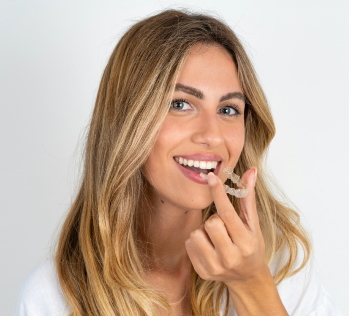
Each set of clear aligners are worn 1-2 weeks at minimum, as directed by your dental provider. Please do not advance to your next set of aligners before your scheduled time. Despite the aligner potentially feeling loose/no longer moving teeth, the roots of the teeth need additional time to catch up with the part of the tooth you see in your mouth.
If some days of wear are missed for any reason, start where you left off and wear your aligners for the full time as recommended by your aligner provider. Call our Boulder Valley Dental Center office to let us know so that we might adjust the timing of your checkup appointments.
Insert/Removal of Aligners
Make sure you have the correct aligner (upper/lower) in the correct number sequence. Change aligners at night to maximize the initial 6-8 hours of movement while you sleep through most discomfort.
Expect “bite hopping” – Your bite may feel unusual when aligners are not worn due to teeth adjusting to new positions. Generally, this resolves through the course of treatment.
When inserting your aligners, gently push the aligners starting with the front teeth. Apply pressure to the tops of the right and left molars until they “snap” into place. Please do not bite them into position.
Be certain each aligner is fully seated. There should not be space between the biting edge of the tooth and the edge of the aligner. There should not be a “flare” of the aligner along the gum/lip line. If the aligner is not set fully in place within the first two days, you are at risk of improper tooth movement, and the next set of aligners will be off even further. This will cause a delay in treatment and may even warrant starting over. Please inform your dental team as soon as possible if you experience fit issues.
When removing aligners, pull down equally on both sides starting with the back teeth, and then gently lift away from the front teeth. Rinse aligners after removal with cold water and store in your case.
Aligners should fit tight initially but become more passive over the two-week period. Sometimes new aligners may not fully seat. If this happens, use provided “chewies” or “straws” to help them fully engage. Aim for 30 minutes of “chewies” exercises daily.
Aligner Attachments
Attachments on your teeth help aligners move as planned and keep them in place. If an attachment comes off, contact us for prompt replacement.
Storage of Aligners
Do not store in napkins as aligners are routinely thrown in the trash and do not keep on surfaces that are accessible to pets (they love new chew toys). Never place aligners in pockets – they can be sat on and warped or broken.
Store your last aligner in your case in the instance that you lose or damage a current aligner. If you lose or damage an aligner, please call our office ASAP. There could be an additional incurred charge for damaged or lost aligners.
Care of Aligners 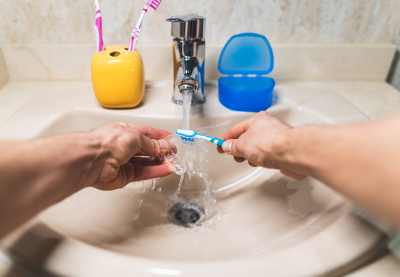
Clean your aligners thoroughly like your teeth – with a soft manual or electric toothbrush and cold running water prior to insertion. Warm water can damage the aligners.
DO NOT soak your aligners in alcohol, bleach, mouthwash, or hydrogen peroxide – this will damage your aligners. Let us know if you are unable to keep your aligners clean.
You may purchase products such as OAP or similar to help with cleaning your aligners between swapping them out.
Managing Pain and Discomfort
You may experience soreness for the first couple of days after changing into new aligners. You should never experience prolonged or severe pain – if this occurs please call our office ASAP.
Take acetaminophen for pain relief if not contraindicated; try to avoid Ibuprofen (NSAID) as it inhibits the inflammatory process crucial for tooth movement.
Diet and Lifestyle
Oral Hygiene – After aligners are removed and you’ve waited 30 minutes after eating, brush and floss normally before re-inserting aligners. Large food debris could prevent proper fitting. At night, it is a best practice to use prescription strength toothpaste such as Clinpro to decrease the risk of tooth decay while going through your aligner treatment. Ask your dental team about this product at your next appointment.
Eating – Other than not chewing gum, there are no dietary restrictions with your aligners. Be sure to always removing them before eating. Drinking – always remove aligners before drinking anything other than cold or room temperature water in order to prevent staining and cavities. If the aligners are not removed, fluid/food will enter the aligners and will be held against teeth for hours, possibly damaging teeth and aligners.
Smoking – To prevent stain and damage to teeth and aligners, it is advised to NOT smoke.
If you have any questions or concerns about your treatment, please contact Boulder Valley Dental Center at 303-666-8820! Our team can provide you with more information and make an appointment with our dentist in Louisville, Colorado, if necessary.

Dental Crowns, Bridges & Veneers Post-Op Instructions
First AppointmentBefore the placement of crowns, bridges or veneers, damaged tooth structures are removed to accommodate the new restoration materials. Accurate scans are taken and sent to a dental laboratory for fabrication. A second appointment is necessary for the permanent cementation of the restoration.
Dental anesthesia typically wears off 1-3 hours following your appointment. Please do not chew on the numbed area until the anesthesia wears off in order to prevent damage to the temporary restorations or your soft tissues. If your bite feels “high” in any of the areas we worked, please call us ASAP for an adjustment. The bite imbalance may cause discomfort or premature failure of the restorations.
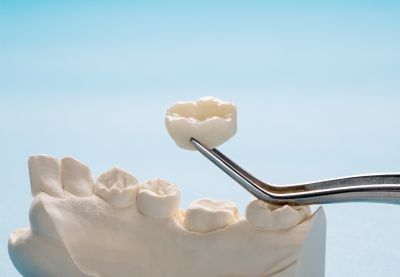
Following the initial appointment, temporary crowns or veneers are placed and cemented onto the prepared teeth. Temporary cement washes out rapidly, potentially causing sensitivity to hot and cold. Your gum tissues may also be tender. These are NORMAL symptoms. Typically, the more involved the procedure is, the more sensitivity you may experience. These symptoms should get better with time and resolve after a few days/weeks. If you experience spontaneous or lingering pain, contact us immediately.
Temporary crowns or veneers stay in place for 2-3 weeks while your customized restoration is being fabricated by our team of certified dental lab technicians. The job of the temporary is to protect the tooth and hold the tooth’s position. It is important to remember the temporary is not as strong as the definitive restoration, so please try to avoid hard, crunchy, sticky, chewy foods (think ice, taffy, gum, etc.). If your temporary becomes loose, breaks or comes off, please call our office to prevent shifting of the tooth and improper fitting of the final restoration.
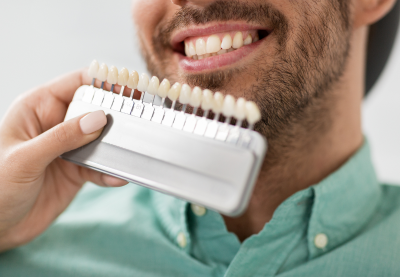
Oral Care – Brush the area gently and use caution while flossing. Avoid upward flossing motions to prevent dislodging the temporary restoration. If a temporary crown becomes loose or falls out, clean it and apply a drop of toothpaste on the inside of the temporary to replace it on the tooth. The temporary will only fit in one direction.
Second Appointment
Depending on the level of sensitivity you have experienced, you may opt to be numbed for the final crown/veneer/bridge cementation. The temporary is removed and cleaned. The permanent restoration is checked for fit, verified with an X-ray, and permanently cemented. After the permanent restoration is cemented, refrain from eating or drinking for 30 minutes. Avoid hard or sticky foods for 24 hours to allow the cement to set fully and be the strongest before beginning to chew normally.
Depending on the level of sensitivity you have experienced, you may opt to be numbed for the final crown/veneer/bridge cementation. The temporary is removed and cleaned. The permanent restoration is checked for fit, verified with an X-ray, and permanently cemented. After the permanent restoration is cemented, refrain from eating or drinking for 30 minutes. Avoid hard or sticky foods for 24 hours to allow the cement to set fully and be the strongest before beginning to chew normally.
The flossing contacts should remain tight to prevent debris/bacteria impaction which could lead to periodontal (gum/bone) disease. Your dental team should be made aware of open flossing contacts or fractured porcelain.
After Receiving Your Crowns, Bridge or Veneers 
It is important to maintain proper oral hygiene practices, including brushing at a 45-degree angle along the gum line twice daily and flossing along the edges of your restorations once a day to prevent cavities and gum disease. Flossing is especially crucial for the health of crowns, bridges and veneers. Even with perfectly fitted restorations, you can still develop decay beneath them if you are not meticulous with proper daily oral hygiene.
Avoid chewing extremely hard or crunchy foods with your new restoration, such as ice or hard candy. Also, refrain from biting down on objects that could damage your teeth, like fingernails or pens. Anything harmful to your natural teeth poses a risk to your restoration as well.
We recommend professional dental cleanings and evaluation at least twice a year, unless otherwise advised by Dr. Annissa and her team. If you have a history of periodontal (gum) disease, you may need to visit us up to four times a year. By adhering to proper maintenance, you not only extend the life of your restoration but also prevent potential issues elsewhere in your mouth.
Nighttime Appliance
Use a nighttime appliance, particularly after implant restorations, to prevent excessive force on the restoration interface, which could lead to fractures.
Following these post-operative instructions diligently will promote the longevity and success of your dental crowns, bridges or veneers. If you have any concerns or experience persistent discomfort, do not hesitate to contact Boulder Valley Dental Center at 303-666-8820 to speak with our team and make an appointment with our dentist in Louisville, Colorado, for assistance.

Dental Implants Post-Op Instructions
Initial Recovery PhaseBite gently on the gauze pad provided over the surgical site for one hour. Replace it with a fresh gauze pad afterward if necessary. Do not spit, do not use a straw, and refrain from vigorous mouth rinsing or touching the surgical area with your hands or tongue to prevent dislodging the blood clot. Use tissues to wipe your face as needed.
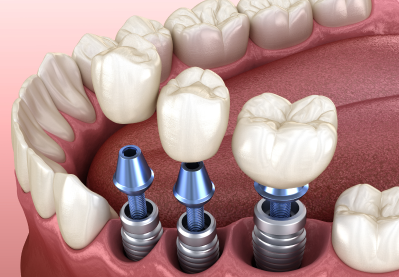
To reduce swelling, apply ice packs to the sides of your face for the first day – 20 minutes on, 20 minutes off. Take prescribed pain medications as soon as possible to ensure effectiveness before the local anesthesia wears off. Limit activities on the day of surgery to avoid excessive bleeding and discomfort.
Absolutely no smoking during the healing period. Smoking will increase the risk of losing the blood clot as well as increase your risk of an infection/surgical failure.
Bleeding Management
While bleeding is generally minimal with implants compared to tooth extractions, apply gentle biting pressure with gauze pads for 6-10 hours post-surgery. A bit of oozing is within normal. If bleeding persists, use a moistened tea bag or contact our office for further guidance.
Swelling Control
Expect swelling proportional to the extent of surgery. It may range from mild to severe and each patient is different. Ice packs can be applied immediately after surgery if necessary. Apply ice packs intermittently for the first day, then consider switching to moist heat after 36 hours to reduce swelling. Swelling may increase in the first 2-3 days following surgery before it starts to subside. Bruising may also occur. Soft, puffy swelling is normal; however, contact us immediately if you notice unusual swelling accompanied by increased pain or hardness.
Temperature Monitoring
Low-grade temperature for up to 10 days post-surgery is normal. Contact us if you experience a high temperature (>101F) lasting longer than 6-8 hours.
Pain Management
Pain or discomfort may persist for several days. If you were given prescriptions for pain management, take them all consistently as directed on the bottle. Most patients find relief with over-the-counter pain relievers like acetaminophen and Ibuprofen. Please follow our evidence-based pain management protocol as closely as possible in order to remain out of pain instead of “chasing” pain once it returns.
If prescription pain medication is needed beyond four days, contact our office for further evaluation.
Take medications with food to minimize nausea and avoid driving, swimming, operating machinery, or drinking alcoholic beverages while under the influence of prescription pain medications. Call us if you experience severe nausea/vomiting, diarrhea, or are not able to swallow your medication.
Antibiotics
Complete the prescribed course of antibiotics to prevent infection. Do not discontinue half way.
Dietary Guidelines
Avoid chewing on the implant site during the healing phase and opt for soft foods and liquids initially (i.e., mashed potatoes, scrambled eggs, cottage cheese, etc.). Stay hydrated with plenty of fluids but avoid using straws to prevent dislodging the blood clot. Gradually return to a normal diet as tolerated, focusing on smaller, frequent meals for comfort.
Oral Hygiene
Maintain good oral hygiene by gently brushing your teeth and the healing abutments.
After 24 hours, you can begin rinsing or irrigating with warm salt water or prescribed mouthwash at least four to five times daily, especially after meals. Use prescribed oral rinse as directed, if provided.
Smoking Cessation
Smoking significantly delays healing and increases the risk of implant failure and infection. Refrain from smoking to ensure optimal healing and long-term implant success.
Activity Level: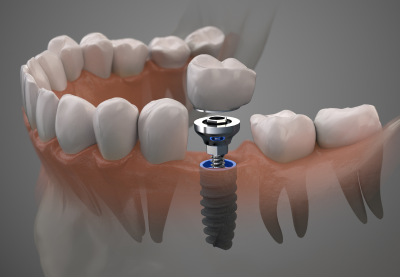
Limit physical activities until you are no longer taking prescription pain medication post-surgery to prevent bleeding or discomfort. If considering exercise, start with low impact activity and gradually increase over several days and back to your normal exercise routine. Monitor for any adverse reactions and discontinue if necessary due to bleeding or throbbing.
Your commitment to these guidelines will contribute to a smooth recovery and optimal outcome. Please do not hesitate to contact Boulder Valley Dental Center at 303-666-8820 if you have any concerns or require further assistance. Our team will be happy to provide you with more information and help you schedule a follow-up appointment with our dentist in Louisville, Colorado.

Endodontic Therapy Post-Op Instructions
Pain ManagementAs the medicine used to numb your tooth during the procedure begins to wear off, it is normal to experience some discomfort, tenderness or mild pain in the area. You also may feel mild jaw soreness from keeping your mouth open throughout the duration of the procedure. The temporary symptoms are typically well controlled with over-the-counter pain medications such as ibuprofen or acetaminophen if not contraindicated. Follow the recommended dosage instructions provided on the medication packaging or the evidence-based pain management protocol which has been provided to you. If prescription pain medication is dispensed to you, it is imperative to follow the instructions on the bottle. Take medications with food to minimize nausea and avoid driving, swimming, operating machinery, or drinking alcoholic beverages while under the influence of prescription pain medications. Call us if you experience severe nausea/vomiting, diarrhea, or are not able to swallow your medication.
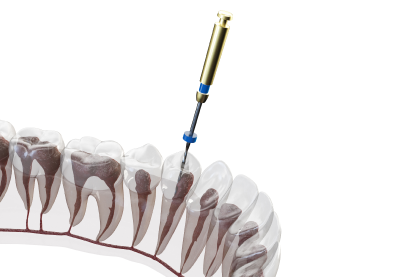
Though this newly treated tooth may feel slightly different than your other teeth for some time, you should contact our office immediately if you experience:
- Severe pain/pressure lasting longer than a few days.
- Visible swelling (inside or outside of your mouth)
- Allergic reaction to medications (itching, hives, or rash)
- An uneven bite
- The loss of your temporary crown or filling (the loss of a thin layer of material is normal).
- Pre-operative symptoms return (spontaneous/lingering pain)
Avoid Chewing on the Treated Tooth
Refrain from chewing on the side of your mouth where the root canal was performed, especially if you experience tenderness or sensitivity. This will help prevent any damage to the temporary filling or crown placed over the tooth.
Maintain Oral Hygiene
Continue to brush and floss your teeth as usual, being careful and gentle around the treated tooth. However, avoid vigorous brushing or flossing around the area to prevent irritation or dislodging of any temporary filling material.
Be Mindful Eating and Drinking
For the first few days following the procedure, stick to soft foods that are easy to chew and won’t exert too much pressure on the treated tooth. Avoid excessively hot or cold foods and beverages, as sensitivity may be heightened during this time.
Avoid Smoking and Alcohol
Refrain from smoking or consuming alcohol, as these activities can interfere with the healing process and increase the risk of complications.
Attend Follow-up Appointments
Be sure to attend any scheduled follow-up appointments with our dentist. These appointments are essential for monitoring your healing progress and ensuring that the treated tooth is responding well to the procedure.
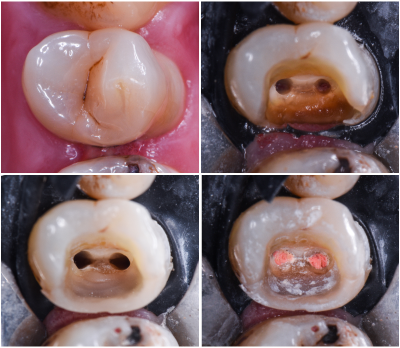
Report Any Concerns
If you experience severe or worsening pain, swelling, discharge or any other unusual symptoms after the root canal therapy, contact Boulder Valley Dental Center immediately. These could be signs of complications that require prompt attention.
Complete the Final Restoration
In most cases, a permanent filling or crown will be placed on the treated tooth to restore its strength and functionality. Follow our dentist’s recommendations for scheduling this final restoration procedure. A properly treated and restored tooth can last as long as your natural teeth.
Remember that every individual’s recovery process may vary, so please follow the specific instructions our dentist and team provide for your post-op care and recovery. By following these guidelines and attending all follow-up appointments, you can help ensure a successful outcome from your root canal therapy. If you have any questions about root canal therapy or to schedule a follow-up appointment with Dr. Annissa Michael, please contact our office at 303-666-8820.

Fillings Post-Op Instructions
Dental fillings are considered a common dental procedure. However, you still need to take care to follow all post-op instructions after your treatment is complete. These instructions include: .
- Avoid Eating or Drinking Immediately: After the procedure, avoid eating or drinking for at least one to two hours to allow the anesthetic to wear off and prevent any trauma to your soft tissues or newly placed restoration.
- Be Cautious with Hot and Cold Foods: Sensitivity to hot and cold foods is common after a dental filling. Try to avoid extreme temperatures for the first few days. As long as the sensitivity is not severe and continues improving, there is generally no cause for concern.
- Take Pain Medication as Directed: Some discomfort or sensitivity after the procedure is normal. Your gums may feel tender and the anesthetic injection site may feel sore. Over-the-counter pain medication such as ibuprofen (Advil) or acetaminophen (Tylenol) can help manage any discomfort. Follow the instructions on the medication packaging or your dentist’s recommendations.
- Avoid Hard or Sticky FoodsFor the first 24 hours after the filling, avoid hard or sticky foods that could dislodge or damage the filling material. Opt for softer foods to minimize stress on the newly treated tooth.
- Maintain Good Oral Hygiene: Continue to brush and floss your teeth regularly, but be gentle around the filled tooth to avoid re-irritating the area after your procedure. Use a soft-bristled toothbrush and avoid vigorous brushing near the filling site.
- Be Aware of Bite Sensitivity: If your bite feels uneven or if you experience persistent pain when biting down, contact Boulder Valley Dental Center immediately. This could indicate that the filling needs adjustment.
- Attend Follow-Up Appointments: If you have a scheduled follow-up appointment, make sure to attend it. During this visit, our dentist will check the filling and ensure it is functioning properly.
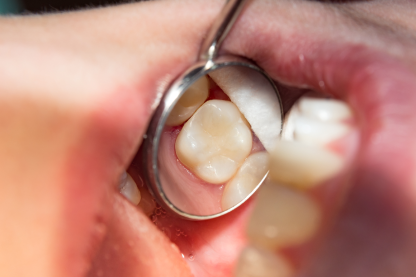
- Report Any Unusual Symptoms: If you experience severe pain, swelling, bleeding or any other unusual symptoms after the filling procedure, contact our dentist and team right away. These could be signs of complications that require immediate attention.
- Follow a Regular Dental Visit Schedule: Maintain regular dental checkups every six months or as recommended by our dentist. These appointments are crucial for monitoring the condition of your fillings and overall oral health.
By following these post-operative instructions, you can help ensure a smooth recovery and long-lasting success of your dental filling. If you have any concerns or questions, or to make an appointment with our dentist in Louisville, Colorado, call our office at 303-666-8820.

Nighttime Appliance Instructions
If you are wearing an EMA® (Elastic mandibular Advancement) oral appliance, PNO (physiologic nighttime orthotic), OSA (obstructive sleep apnea) appliance, snoring appliance, or occlusal guard, our dentist and team will provide you with specific instructions on how to wear and care for the appliance. These instructions include:
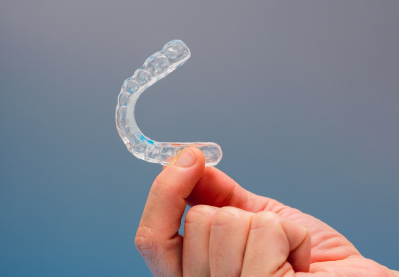
- Initially, you may experience increased saliva flow, which should decrease after a few nights. Later on, you may notice occasional dryness in your mouth. Some patients may experience slight gagging or the feeling of difficulty swallowing, but these sensations should not be permanent.
- The appliance will likely feel cumbersome as you initiate wear and get used to wearing it nightly. Please work diligently towards consistent nightly wear.
- Tooth soreness and jaw muscle fatigue are common due to teeth clenching and jaw positioning. This discomfort typically diminishes as you adjust to the appliance. If severe soreness or gum irritation occurs, contact our office for adjustments.
- It is not uncommon to feel a difference in your bite upon removing your appliance in the morning. This can last for upwards of 45 minutes. If applicable, please wear your AP repositioner in the morning for at least 15 minutes to reposition to your proper bite.
- If wearing an EMA appliance, the elastic straps on the appliance are crucial for its effectiveness. Some patients may need frequent strap changes, while others may not. Expect potential adjustments during the initial months. Please reach out to our office with needs for adjustments.
- Maintain good oral hygiene by brushing and flossing before wearing the appliance. Clean it daily with a soft toothbrush. Avoid soaking in mouthwash or alcohol exposure. Rinse and store the appliance dry during the day. Please DO NOT leave in a spot that is accessible to children or pets. Doing so can pose a risk for damaging your appliance or your little ones.
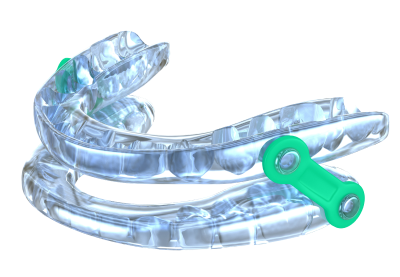
- If your bite feels off in the morning, chew sugar-free gum briefly to restore it. Contact our office if the issue persists.
- Bring your appliance to every dental appointment for assessment and ensure dental work doesn’t affect its fit. Major dental procedures may necessitate a new appliance.
- Notify our office if the appliance loosens or comes off easily, especially during sleep. Also, contact us if tooth soreness persists after removal or if mouth tissues become irritated.
- A small percentage of patients experience worsening symptoms when wearing an oral appliance. Please contact our office immediately if your symptoms increase.
If you have any questions or concerns about your oral nighttime appliances, please contact Boulder Valley Dental Center at 303-666-8820 for more information and schedule your appointment with Dr. Annissa Michael.

Oral Surgery Post-Op Instructions
Bone Grafting Post-Op Instructions In addition to the general post-operative guidelines, specific care is necessary for bone graft procedures. The graft is composed of many fine granules. It is not uncommon to feel small particles throughout your mouth in the first few days following your procedure. Do not be alarmed if this is your experience. Follow these instructions in order to help minimize the loss of these particles.
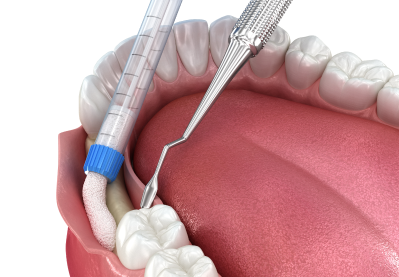
- Dietary Considerations: Consume a soft, mild, and nutritionally balanced diet for 2-4 days post-surgery. As healing progresses, return to your normal eating routine.
- Swelling Management: Following oral surgical procedures, swelling is normal and will typically peak around 48 hours post-surgery. Elevate your head with two pillows when lying down to minimize facial swelling. Apply cold compresses to the face for the first 48 hours (20min on, 20min off), followed by warm compresses after 48 hours, each for 30 minutes on and off, until swelling diminishes.
- Rinsing and Oral Hygiene: Refrain from vigorous rinsing or spitting for 3-5 days to stabilize the blood clot. After the first day, softly brush adjacent teeth without disturbing the graft site. Avoid pressure on the grafted area with your tongue or fingers and refrain from lifting or pulling the lip to view sutures
- Bruising Management: If bruising occurs, apply warm compresses (30 minutes on, 30 minutes off) to expedite healing.
- Addressing Bleeding: Reposition gauze pads if heavy bleeding occurs, ensuring pressure is directly on the surgical area without clenching between teeth.
- Pain Relief: Take pain relievers before numbness subsides, utilizing over-the-counter medications like ibuprofen or acetaminophen if not contraindicated. Please follow your dispensed pain management protocol for optimal oral pain management. For more severe pain, a prescribed narcotic may be necessary. If prescription pain medication is dispensed to you, it is imperative to follow the instructions on the bottle. Take medications with food to minimize nausea and avoid driving, swimming, operating machinery, or drinking alcoholic beverages while under the influence of prescription pain medications. Call us if you experience severe nausea/vomiting, diarrhea, or are not able to swallow your medication.
- Antibiotics: If prescribed, take antibiotics as directed to treat and prevent infections. Discontinue if any adverse reactions occur and seek medical attention for severe reactions such as swelling of the lips or tongue.
- Infection Awareness: Monitor for signs of infection such as increased swelling, throbbing pain, or foul-tasting drainage. Contact the office if infection is suspected.
- Smoking and Alcohol Abstinence: Avoid tobacco and alcohol for the first two weeks after surgery.
- Oral AppliancesPlease adhere to recommendations regarding temporary disuse of appliances (dentures, flippers, retainers, etc.) until your surgical site is healed enough to tolerate their wear.
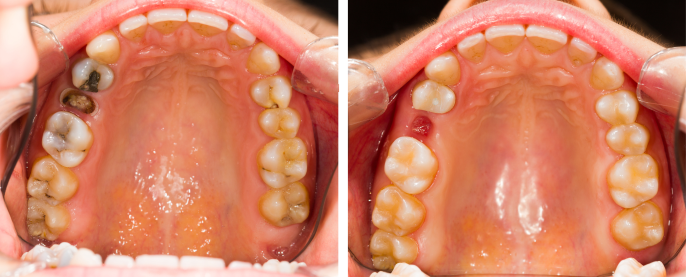
Please contact our office if you have any concerns or questions.
Tooth Extraction Post-Op Instructions
After tooth extractions:
- Immediately following surgery: Bite down on gauze that has been positioned over the surgical site firmly but gently. Please do not disturb the gauze for the first 30 minutes. Reapply clean gauze by gently “rolling” the gauze toward your cheek and removing. Do not eat, drink, or sleep with gauze in your mouth. If heavy bleeding persists, start by making sure the gauze is pressing down correctly on the surgical site. Continue to bite for 30min-1h. Oozing is within normal for the first day or longer if you are on prescription blood thinners. It is normal for blood to mix with saliva and this should be considered when determining if profuse bleeding persists. You may discontinue use of gauze once bleeding has stopped. If heavy bleeding continues after the first day, please do not hesitate to call our office.
- Avoid Rinsing Today: Refrain from rinsing your mouth today and do not spit. Tomorrow, gently rinse every 3-4 hours, particularly after meals, with warm salt water. This prevents dislodging the blood clot which is important for healing. If you were given an irrigation syringe, please start using 1 week post operatively. Fill the syringe with warm water and direct into extraction site to rinse out food debris which can prevent proper healing. The extraction site heals from the bottom/sides and fills up/in. It is normal to notice a hole where the tooth once was but this will eventually fill in with soft tissue (3-4 weeks) and bone (3-4 months).
- Addressing Swelling: Following oral surgical procedures, swelling is normal and will typically peak around 48h post-surgery and will typically subside in 3-5 days. Elevate your head with two pillows when lying down to minimize facial swelling. Apply cold compresses to the face for the first 48 hours (20min on, 20min off), followed by warm compresses after 48h, each for 30 minutes on and off, until swelling diminishes.
- Managing Pain: Unfortunately, most oral surgery is accompanied by some discomfort. For mild to moderate pain, please follow our evidence-based pain management protocol if not contraindicated. If prescription pain medication is dispensed to you, it is imperative to follow the instructions on the bottle. Take medications with food to minimize nausea and avoid driving, swimming, operating machinery, or drinking alcoholic beverages while under the influence of prescription pain medications. Call us if you experience severe nausea/vomiting, diarrhea, or are not able to swallow your medication.
- Antibiotics: If prescribed, take antibiotics as directed to treat and prevent infections. Discontinue if any adverse reactions occur and seek medical attention for severe reactions such as swelling of the lips or tongue.
- Dietary Recommendations: Stick to a soft diet for the first 24-48 hours, including foods like yogurt, scrambled eggs and soups. Avoid drinking through a straw. A nutrient-balanced diet is important for healing and reduction of discomfort.
- Smoking Cessation: Refrain from smoking to prevent painful dry socket formation.
- Dry Socket: This can occur 3-4 days following your surgery due to a dislodged blood clot. A dry socket causes constant, radiating pain that should not be ignored. If you experience these symptoms, please call our office. The placement of a medicated dressing may be required to resolve this issue.
Schedule An Appointment
Adhering to post-op instructions helps optimize your recover and minimizes your risk of post-treatment complications. Reach out to us at 303-666-8820 if you have any questions or to schedule a follow-up appointment with your Boulder Valley Dental Center team.

Periodontal Therapy Post-Op Instructions
Laser Bacterial Reduction Post-Op InstructionsFollowing laser bacterial reduction, we recommend that you:
- Avoid Eating or Drinking Immediately: After the laser bacterial reduction procedure, refrain from eating or drinking for at least one hour to allow the treated areas to heal properly and for anesthetic medication to wear off.
- Be Cautious with Hot and Cold Foods: Sensitivity to hot and cold foods may occur after the procedure. Try to avoid extreme temperatures for the first few days. Avoid spicy, sharp, and crunchy foods for the first 48 hours. Avoid foods with seeds or husks for 3-5 days.
- Continue Regular Oral Hygiene: Maintain good oral hygiene habits, including brushing and flossing, but be gentle around the treated areas to avoid irritation. Start using Waterpik after 3 days on low pressure. Work up to regular pressure after 1 week.
- Use Mouthwash as Directed: Our hygiene team and doctor may recommend a special mouthwash to help reduce bacteria and promote healing. Use it as instructed, typically for the first few days following the procedure. If a medicated mouth rinse was not prescribed, please rinse with warm salt water (1 tsp. in 8 oz. warm water) 3x per day until tissues are comfortable.
- Take Pain Medication as Needed: Over-the-counter pain medication such as ibuprofen (Advil) or acetaminophen (Tylenol) can help alleviate any discomfort. Follow the dosage instructions on the medication packaging or our dentist’s recommendations. Apply Vitamin E or coconut oil to gum tissue 2-4x daily for 3-4 days.
- Attend Follow-Up Appointments: If our dentist scheduled a follow-up appointment, make sure to attend it. During this visit, she will evaluate the effectiveness of the laser bacterial reduction and address any concerns you may have.
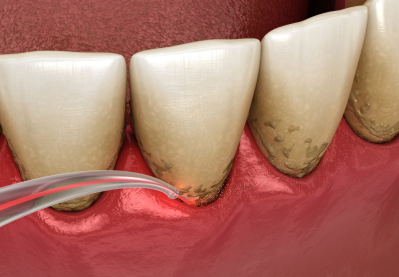
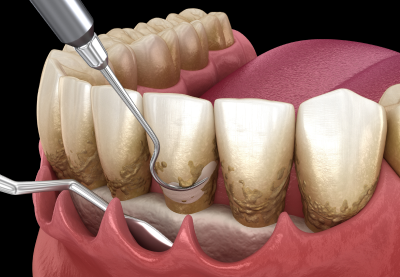
Scaling & Root Planing Post-Op Instructions
- Avoid Eating or Drinking Immediately: After scaling and root planing, avoid eating or drinking for at least one to two hours to allow the treated areas to heal properly and the anesthetic effects to wear off.
- Be Cautious with Hot and Cold Foods: Sensitivity to hot and cold foods is common after scaling and root planing. As the gum tissues heal and tighten back up, excess sensitivity should resolve. Try to avoid extreme temperatures for the first few days and use a sensitivity toothpaste to help with sensitivity over time. If this sensitivity does not resolve or worsens, please contact our office regarding options for desensitization treatment.
- Continue Regular Oral Hygiene: Continue to brush and floss your teeth regularly, but be gentle around the treated areas to avoid irritation.
- Smoking Cessation: Smoking significantly delays healing and increases the risk of re-infection. Refrain from smoking to ensure optimal healing and long-term periodontal therapy success.
- Use Mouthwash as Directed: Our dentist may prescribe a special antimicrobial mouthwash to help prevent infection and promote healing. Use it as instructed, typically for the first few days following the procedure.
- Take Pain Medication as Needed: If you experience any discomfort after scaling and root planing, you can take over-the-counter pain medication such as ibuprofen (Advil) and acetaminophen (Tylenol). Please follow our evidence-based pain management protocol if not contraindicated.
- Attend Follow-Up Appointments: Following your treatment, you will begin to notice less bleeding, swelling, and redness in your gums. Often times, patients notice smoother feeling teeth and less bad tastes/odors in their mouths. In order to maintain this healthier state of your gums, periodontal maintenance appointments are imperative every 3-4 months. This is how long it takes for the same bacteria to reinfect the space below your gumline. Prioritizing these visits are important for monitoring your healing progress and ensuring the success of the treatment.
Make An Appointment
By following these post-op instructions you can help promote healing and maintain optimal oral health. If you have any questions or concerns, please call Boulder Valley Dental Center at 303-666-8820 and speak with a member of our team. We will be happy to provide you with more information and help you make an appointment with our dentist in Louisville, Colorado.

Sedation Dentistry Post-Op Instructions
Sedation dentistry is a wonderful tool for managing anxiety and discomfort in the dental chair. In order to make your recovery period as seamless as your appointment, please follow our express guidelines and also consult the paperwork dispensed to you.
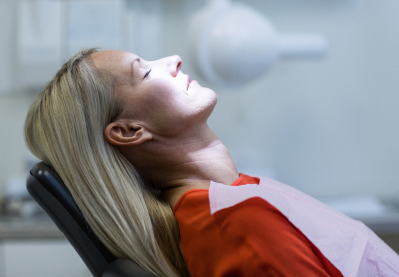
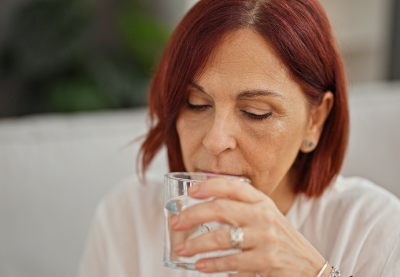
- Do not drive for 24 hours following oral sedation. Instead, have a friend or family member available to drive you to and from your appointment.
- Avoid operating any hazardous machinery or devices for the next 24 hours.
- Until fully recovered from the effects of the sedation medication, have someone available to stay with you.
- Your safety is paramount; avoid going up and down stairs without assistance. Remaining on the ground floor until fully recovered is advised.
- Nutritional intake is important post-sedation. You should start consuming appropriate food as soon as possible without any delay.
- Hydration is key; you should aim to drink plenty of fluids promptly after sedation.
- Despite appearing alert upon departure, you may still be under the influence of sedation. To ensure your safety, you should not be left alone.
- Whoever is with you should hold your arm securely to support you.
- For the following 24 hours after the last dosage of medication, please refrain from carrying, sleeping next to or being left alone with young children.
- Upon leaving Boulder Valley Dental Center, go directly home. Once you are home and are comfortable and safe, please call our office at 303-666-8820 (or have someone call on your behalf) to notify us that you have arrived safely. It is best to take a nap/rest until the effects have worn off.
Should any questions or difficulties arise, do not hesitate to contact our office. In the event of severe symptoms requiring immediate attention and if unable to reach us, seek assistance from the nearest emergency room.
Each individual’s pain threshold varies, and you may or may not experience pain depending on where your pain threshold falls. Medication schedules appropriate for managing discomfort will be provided, typically consisting of acetaminophen (Tylenol) and ibuprofen (Advil). If a narcotic medication is prescribed, adhere strictly to the provided directions. Take medications with food to minimize nausea and avoid driving, swimming, operating machinery, or drinking alcoholic beverages while under the influence of prescription pain medications. Call us if you experience severe nausea/vomiting, diarrhea, or are not able to swallow your medication. If there are any concerns about potential interactions with other medications, do not hesitate to reach out to our office, your physician or pharmacist for clarification.
For more information about sedation dentistry in Louisville, Colorado, or if you have questions about our post-op instructions, please reach out to our team.

Teeth Whitening Post-Op Instructions
To ensure optimal results and maintain the brightness of your smile, Dr. Annissa Michael and our team recommend that you follow these post-op instructions carefully:

- Avoid Staining Foods and Beverages: For the first 48 hours following your whitening treatment, steer clear of dark-colored foods and drinks such as coffee, tea, red wine, berries, tomato sauce and soy sauce. These items can stain your teeth and compromise the effectiveness of the whitening treatment.
- Minimize Consumption of Acidic Foods: Acidic foods and beverages can weaken enamel, making teeth more susceptible to staining and decay. Limit your intake of citrus fruits, sodas and other acidic foods for at least 48 hours after whitening.
- No Smoking or Tobacco Products: Smoking and using tobacco products can quickly stain teeth. Refrain from smoking or using any tobacco products for at least 48 hours after your whitening treatment.
- Avoid Dark-Colored Liquids Through a Straw: If you must consume beverages like coffee or cola, use a straw to minimize contact with your teeth. This helps reduce the risk of staining. Rinse with water immediately following consumption to help dampen the effects of possible stain.
- Practice Good Oral Hygiene: Continue to brush your teeth twice a day and floss daily to maintain oral health and prolong the effects of the whitening treatment. Consider using a whitening toothpaste to help maintain your results if not contraindicated.
- Use Sensitivity Toothpaste if Needed: Some individuals may experience temporary tooth sensitivity after teeth whitening. If you’re experiencing sensitivity, switch to a toothpaste formulated for sensitive teeth for a few days. Do not rinse after brushing with this toothpaste.
- Avoid Teeth-Staining Medications and Mouthwashes: Certain medications and mouthwashes contain ingredients that can stain teeth. Consult with our dentist before using any new oral care products post-whitening.
- Attend Follow-Up Appointments: If our dentist or team recommends any follow-up appointments or touch-up treatments, be sure to schedule and attend them as instructed to maintain the results of your whitening procedure.
- Stay Hydrated: Drinking plenty of water helps flush away any staining substances and keeps your mouth hydrated, promoting overall oral health.
- Monitor Your Diet and Lifestyle Choices: Even after the initial 48-hour period, be mindful of your diet and lifestyle choices to prevent staining and maintain your bright smile.
- Seek Professional Advice if Needed: If you have any concerns or questions about your whitening treatment or post-op care, don’t hesitate to contact our dentist for guidance and assistance.
By following these post-op instructions diligently, you can help ensure the longevity of your teeth whitening results and enjoy a brighter, more confident smile for longer. Remember, maintaining good oral hygiene habits and making smart dietary choices are key to preserving your newly whitened smile. Contact Boulder Valley Dental Center at 303-666-8820 for more information about teeth whitening in Louisville, Colorado, or to schedule an appointment.

Trauma Post-Op Instructions
 If your teeth have sustained dental trauma or injury, our dentist can provide you with the care you need to regain your oral health and get your smile back on track. When patients have dental trauma/injuries, it can take several weeks for the teeth and gums to heal and several weeks up to years to surmise if patients will experience issues in the future. With prompt evaluation and proper follow up appointments, some issues (i.e., Infection and pain) can be diagnosed and treated earlier in order to prevent future issues. Even so, additional treatments may be required in the future such as root canal therapy or removal of a fractured tooth. It is vital to maintain all follow-up appointments and continue to make your check-up appointments regularly. If injured teeth are not checked at the appropriate intervals, the affected teeth may be lost or damaged forever.
If your teeth have sustained dental trauma or injury, our dentist can provide you with the care you need to regain your oral health and get your smile back on track. When patients have dental trauma/injuries, it can take several weeks for the teeth and gums to heal and several weeks up to years to surmise if patients will experience issues in the future. With prompt evaluation and proper follow up appointments, some issues (i.e., Infection and pain) can be diagnosed and treated earlier in order to prevent future issues. Even so, additional treatments may be required in the future such as root canal therapy or removal of a fractured tooth. It is vital to maintain all follow-up appointments and continue to make your check-up appointments regularly. If injured teeth are not checked at the appropriate intervals, the affected teeth may be lost or damaged forever.
Diet
- Stick to a soft diet for 2-3 weeks, including foods like mashed potatoes, Jell-O, yogurt, pudding, applesauce, grits etc.
- Avoid biting into hard or crunchy foods with your front teeth.
Drinking
- Do not drink through a straw and limit spitting to avoid any strain on the affected area.
Sensitivity
- You may experience sensitivity to hot or cold food and drinks. Limit consumption of very hot or very cold items.
- Saltwater rinses are recommended in the morning and evening for at least three days, but avoid overdoing it as it may dry out tissues.
Activity
- Avoid participating in contact sports to prevent further injury.
- Gently brush around the affected areas.
- If a splint was inserted, please gently brush around the splint twice a day.
- If you are unable to brush with a toothbrush, use a wet washcloth to keep the area clean.
- Discuss your oral hygiene with our dentist to determine the best ways to keep your mouth clean and when you can resume normal brushing and flossing.
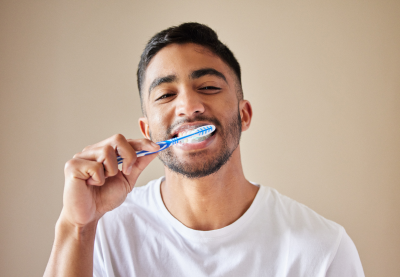
Pain Management
- Use pain relievers such as acetaminophen or ibuprofen if not contraindicated as needed to manage pain and discomfort as directed by your care provider.
- Do not place aspirin or other pain relievers directly against the gums or affected areas in your mouth.
- You may apply cold packs as directed by our dentist.
Contact Us
If you have any questions or concerns, please do not hesitate to call us at 303-666-8820. Please also reach out to us to schedule any follow-up appointments you may need.
Please reach out ASAP if your child experiences any of the following symptoms:
- Fever over 102 degrees and looks very ill
- Facial structures or tissues around the tooth swells (including a bump or a bad taste).
- The affected tooth/teeth changes color (grey, black, etc.).
- The splint is loose
- The temporary filling is lost or loose.
- There is profuse bleeding or pain at the injury site.


 1805 Highway 42, Suite 120, Louisville, CO 80027
1805 Highway 42, Suite 120, Louisville, CO 80027 303-666-8820
303-666-8820